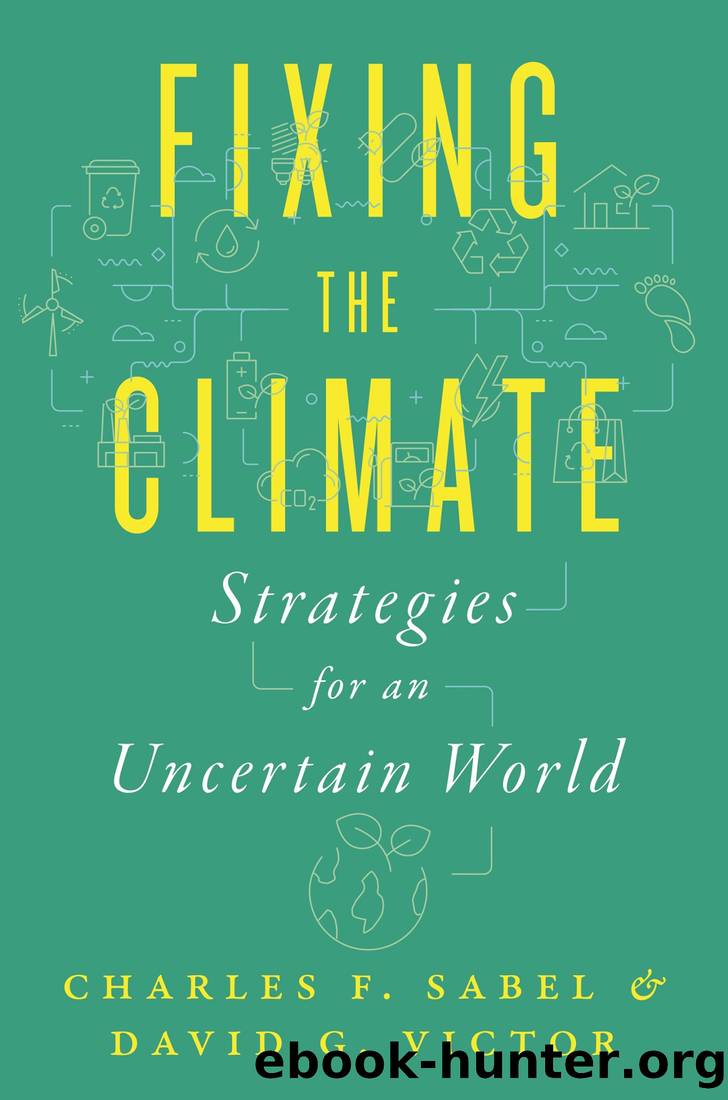Fixing the Climate by Charles F. Sabel

Author:Charles F. Sabel [Sabel, Charles F.]
Language: eng
Format: epub
ISBN: 9780691224558
Publisher: Princeton UP
Published: 2022-04-20T00:00:00+00:00
Sustainability and Development in the Amazon
For a final example of contextualization, we consider efforts to combat deforestation in the Amazon.
Deforestation in the tropics is a menace to the planet. Among other things, it disrupts the climate, destroys irreplaceable habitats, and displaces communities of Indigenous peoples and other forest dwellers. Tropical deforestation in the Amazon, Indonesia, Malaysia, and equatorial Africa alone contributes about 10 percent annually of the total carbon emissions, making it second only to vehicular pollution as a cause of climate change.72 Land use protections have a greater effect here than anywhere else. Where Ireland contextualizes the meaning of âgood waterâ in the WFD and California contextualizes the state regulation of novel energy storage devices for the local management of renewable sources on the grid, Brazil is contextualizing the law and regulation of public and private property to give concrete meaning to sustainability as the reconciliation of economic activity and respect for environmental values in the tropics. There is no place where competing ideas of development and its relation to correspondingly diverse concepts of environmental protection are more openly as well as urgently contested among grassroots movements, local and national governments, and national and international NGOs than in the Amazon.73
We focus on Brazil because it has embraced the most comprehensive range of measures for protecting tropical forests. Enforcement in Brazil, at times aggressively rigorous, has been the most effective among countries with similar protections, and the resulting successes and failures say the most about what does and does not work. Indeed, Brazil has been called a âlaboratory of governance innovationâ in these matters.74 In a first wave of reform, from roughly the end of the military dictatorship in 1985 to the early 1990s, innovations in the use of public land allowed forest-dwelling communities and Indigenous peoples to continue traditional ways that were presumed to have been compatible with the flourishing of the forest over long periods of time. In a second wave, during the two terms of the leftist president Luiz Inácio da Silva, or Lula for short, from 2002 to 2010, the measures directed at traditional forest dwellers were extended, but there was a new focus on commercial land use. Brazil combined the regulation of supply chains in soy and beef with rural land registration, backed up by the application of penalty defaults such as exclusion from subsidized credit or important markets, to induce ranchers and farmers who settled in the Amazon in recent decades to adopt sustainable practices. These measures resulted as intended in a dramatic drop in emissions. But the limits of the reforms with respect to both traditional and commercial land users, exacerbated by political changes, have become clear in recent years and are reflected in increased rates of deforestation. These limits underscore again, and boldly, the zigzag course of these contextualizing reforms, typically over decades, and the need for a background consensus on general goals, no matter how thin, to learn from the failures of partial successes.
The distinctiveness of its reforms notwithstanding, the arc of Brazilâs development of the Amazon exemplifies broader tendencies.
Download
This site does not store any files on its server. We only index and link to content provided by other sites. Please contact the content providers to delete copyright contents if any and email us, we'll remove relevant links or contents immediately.
The Secret History by Donna Tartt(18846)
The Social Justice Warrior Handbook by Lisa De Pasquale(12141)
Thirteen Reasons Why by Jay Asher(8795)
This Is How You Lose Her by Junot Diaz(6794)
Weapons of Math Destruction by Cathy O'Neil(6143)
Zero to One by Peter Thiel(5686)
Beartown by Fredrik Backman(5598)
The Myth of the Strong Leader by Archie Brown(5425)
The Fire Next Time by James Baldwin(5249)
How Democracies Die by Steven Levitsky & Daniel Ziblatt(5128)
Promise Me, Dad by Joe Biden(5087)
Stone's Rules by Roger Stone(5026)
A Higher Loyalty: Truth, Lies, and Leadership by James Comey(4843)
100 Deadly Skills by Clint Emerson(4840)
Rise and Kill First by Ronen Bergman(4704)
Secrecy World by Jake Bernstein(4646)
The David Icke Guide to the Global Conspiracy (and how to end it) by David Icke(4625)
The Farm by Tom Rob Smith(4436)
The Doomsday Machine by Daniel Ellsberg(4416)
